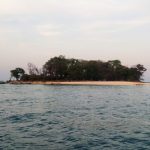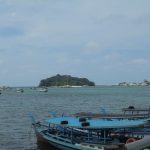Download links
How to install Rediscovering Paradise: The Allure of Boracay APK?
1. Tap the downloaded Rediscovering Paradise: The Allure of Boracay APK file.
2. Touch install.
3. Follow the steps on the screen.
Description
Boracay, a small island in the Philippines, has a rich and fascinating history that has transformed it from a secluded paradise into one of the world’s most sought-after tourist destinations. Initially inhabited by indigenous groups, the island was relatively unknown to the outside world until the late 20th century. The local economy was primarily based on fishing and subsistence agriculture, with the island’s natural beauty largely untouched.
It wasn’t until the 1970s that Boracay began to attract attention from foreign travelers, particularly backpackers seeking an idyllic escape. The island’s powdery white sand beaches and vibrant marine life started to draw in visitors, leading to a gradual shift in its economic landscape. As word spread about Boracay’s stunning beaches, particularly White Beach, the island began to see an influx of tourists.
By the 1980s, Boracay was featured in various travel publications, further solidifying its reputation as a tropical paradise. The Philippine government recognized the potential for tourism and began investing in infrastructure, which included roads, accommodations, and other essential services. This development, while beneficial for the local economy, also sparked concerns about environmental degradation and cultural erosion.
As Boracay transitioned into a global hotspot, it faced the challenge of balancing growth with sustainability, a theme that continues to resonate today.
Key Takeaways
- Boracay has evolved from a hidden gem to an international hotspot, attracting tourists from all over the world.
- The island is known for its pristine beaches and crystal clear waters, making it a paradise for beach lovers and water enthusiasts.
- Boracay boasts a thriving culture with delicious local cuisine, vibrant arts scene, and colorful festivals that showcase the island’s rich heritage.
- Adventure seekers will find plenty to do in Boracay, from water sports like snorkeling and diving to hiking and island hopping.
- Sustainable tourism is a priority in Boracay, with efforts to balance preservation of the island’s natural beauty with responsible development for the future.
The Natural Beauty of Boracay: Pristine Beaches and Crystal Clear Waters
White Beach: A Tropical Gem
White Beach, often considered one of the world’s best beaches, stretches for approximately four kilometers and is lined with palm trees and luxurious resorts. The sand is composed of fine white coral particles, giving it a soft texture that feels like powder underfoot.
Discovering Boracay’s Other Stunning Beaches
Beyond White Beach, Boracay boasts several other stunning beaches, each with its unique charm. Puka Shell Beach is known for its rugged beauty and is less crowded than White Beach, making it an ideal spot for those seeking solitude. Bulabog Beach, on the other hand, is famous for its windsurfing and kiteboarding opportunities, attracting adventure enthusiasts from around the globe.
Exploring Boracay’s Vibrant Marine Life
The island’s vibrant marine life is equally captivating, with snorkeling and diving spots abound, showcasing colorful coral reefs teeming with diverse fish species.
The Thriving Culture of Boracay: Local Cuisine, Arts, and Festivals

The culture of Boracay is a vibrant tapestry woven from its indigenous roots and influences from various cultures brought by tourists and settlers over the years. Local cuisine plays a significant role in this cultural landscape, with seafood being a staple due to the island’s rich marine resources. Dishes such as kinilaw (a Filipino ceviche), and fresh lobster are popular among both locals and visitors.
Street food vendors offer an array of snacks like fish balls and banana cue, providing a taste of authentic Filipino flavors. Restaurants range from casual eateries to upscale dining establishments, each offering unique culinary experiences that reflect the island’s diverse influences. Art and creativity flourish in Boracay as well.
Local artisans showcase their crafts through various mediums, including woodwork, textiles, and jewelry. The island hosts art exhibits and workshops that allow visitors to engage with local artists and learn about traditional Filipino art forms. Festivals also play a crucial role in celebrating Boracay’s culture; events like the Ati-Atihan Festival highlight the island’s rich heritage through vibrant parades, traditional music, and dance performances.
These cultural celebrations not only provide entertainment but also foster a sense of community among residents and visitors alike.
The Adventure Awaits: Water Sports, Hiking, and Island Hopping
| Activity | Number of Participants | Distance Covered (in miles) |
|---|---|---|
| Water Sports | 500 | 100 |
| Hiking | 300 | 50 |
| Island Hopping | 200 | 150 |
For adventure seekers, Boracay offers an abundance of activities that cater to various interests. Water sports are particularly popular due to the island’s favorable conditions. Tourists can engage in thrilling activities such as parasailing, jet skiing, and banana boat rides.
Scuba diving and snorkeling excursions allow visitors to explore the underwater world, where they can encounter vibrant coral reefs and diverse marine life. The clear waters provide excellent visibility for divers, making it a prime location for both beginners and experienced divers alike. In addition to water sports, Boracay’s natural landscape offers opportunities for hiking and exploration.
Mount Luho, the highest point on the island, provides panoramic views of Boracay’s stunning coastline and surrounding islands. A hike to the summit rewards adventurers with breathtaking vistas that are perfect for photography enthusiasts. Island hopping tours are another popular way to experience the beauty of Boracay’s neighboring islands such as Crocodile Island and Crystal Cove.
Sustainable Tourism in Boracay: Balancing Preservation and Development
As Boracay’s popularity surged over the years, so did concerns regarding environmental sustainability and cultural preservation. In 2018, the Philippine government temporarily closed Boracay to tourists for six months to address issues related to pollution and overdevelopment. This unprecedented move aimed to rehabilitate the island’s ecosystems and restore its natural beauty.
During this period, significant efforts were made to improve waste management systems, regulate construction activities, and promote sustainable tourism practices among local businesses. The challenge now lies in balancing tourism development with environmental preservation. Many stakeholders are advocating for responsible tourism practices that prioritize sustainability while still allowing for economic growth.
Initiatives such as eco-friendly resorts that utilize renewable energy sources and promote waste reduction are gaining traction. Local organizations are also working to educate both residents and tourists about environmental conservation efforts. By fostering a culture of sustainability, Boracay aims to protect its natural resources while continuing to thrive as a premier tourist destination.
Rediscovering Paradise: How Boracay is Evolving and Adapting to the Changing Times

In recent years, Boracay has been undergoing a transformation as it adapts to changing times and evolving tourist expectations. The island is embracing technology to enhance visitor experiences while maintaining its commitment to sustainability. Digital platforms are being utilized for booking accommodations and activities, making it easier for travelers to plan their trips while minimizing their environmental footprint.
Additionally, local businesses are increasingly adopting sustainable practices that align with global trends toward eco-conscious travel. Moreover, Boracay is diversifying its offerings beyond traditional beach tourism. Wellness retreats focusing on holistic health have gained popularity as travelers seek relaxation and rejuvenation amidst nature.
Yoga classes on the beach and spa treatments using local ingredients are becoming commonplace as visitors look for ways to unwind in this tropical paradise. Cultural immersion experiences are also on the rise; tourists can participate in cooking classes or traditional craft workshops that provide deeper insights into Filipino culture. As Boracay continues to evolve, it remains committed to preserving its unique charm while adapting to modern demands.
The island’s journey from a hidden gem to an international hotspot serves as a testament to its resilience and ability to embrace change while honoring its rich heritage and natural beauty.
If you’re planning a trip to Boracay, you may also be interested in reading about the popular mobile game “Mario Kart Tour” in this article. Just like Boracay offers a fun and exciting experience for tourists, Mario Kart Tour provides a thrilling and competitive gaming experience for players. Both destinations are known for their vibrant atmosphere and endless entertainment options, making them perfect choices for those looking to have a good time.
FAQs
What is Boracay?
Boracay is a small island in the Philippines known for its beautiful white sand beaches and clear blue waters. It is a popular tourist destination for its stunning natural beauty and vibrant nightlife.
What are the popular activities in Boracay?
Some popular activities in Boracay include swimming, snorkeling, scuba diving, kite surfing, and island hopping. The island also offers a variety of restaurants, bars, and shops for visitors to enjoy.
When is the best time to visit Boracay?
The best time to visit Boracay is during the dry season, which typically runs from November to April. This is when the weather is most pleasant and the waters are calm and clear for swimming and water activities.
Is Boracay family-friendly?
Yes, Boracay is a family-friendly destination with plenty of activities and accommodations suitable for families. The island offers a range of options for all ages, from relaxing beach days to adventurous water sports.
Are there any environmental regulations in Boracay?
Yes, in 2018, the Philippine government closed Boracay for six months to undertake major environmental rehabilitation efforts. Since then, the island has implemented strict regulations to protect its natural resources, including limits on the number of visitors and activities allowed on the island.





